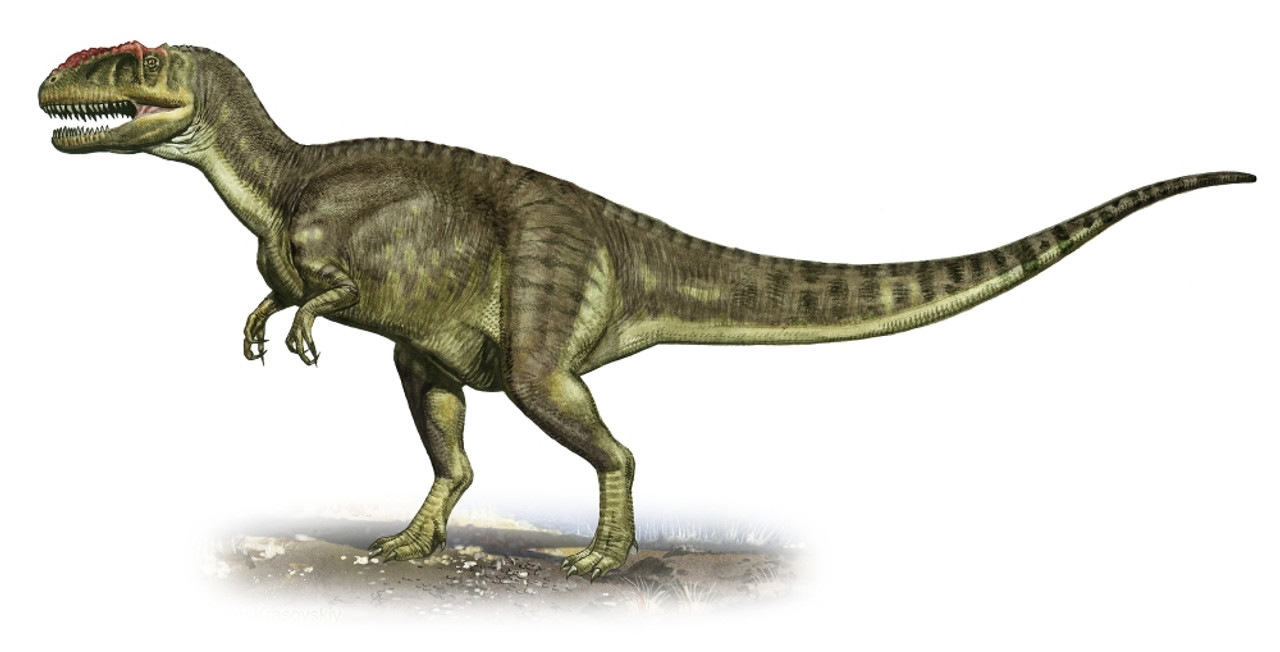
Yangchuanosaurus, a formidable predator of the Jurassic era, continues to captivate the imagination of paleontology enthusiasts worldwide. This majestic dinosaur, belonging to the theropod group, roamed the earth approximately 160 million years ago. Its name, which translates to "Yangchuan lizard," pays homage to the region in China where its fossils were first discovered.
Standing as tall as 30 feet and weighing several tons, Yangchuanosaurus was a dominant force in its ecosystem. Its robust build, sharp teeth, and powerful jaws made it a fearsome hunter, preying on herbivorous dinosaurs of its time. As we delve into the intriguing world of Yangchuanosaurus, we uncover a wealth of fascinating facts that shed light on its behavior, anatomy, and significance in the study of prehistoric life. Join us on a journey through time as we unveil the mysteries surrounding this awe-inspiring creature.
Key Takeaways:
- Yangchuanosaurus, a fearsome predator, roamed the earth 160 million years ago. With its sharp teeth, powerful claws, and keen sense of smell, it was a formidable hunter of herbivorous dinosaurs in the Late Jurassic period.
- Fossils of Yangchuanosaurus were first discovered in China, shedding light on its impressive size, distinct skull structure, and bipedal locomotion. This iconic dinosaur continues to captivate researchers and dinosaur enthusiasts, contributing to our understanding of prehistoric ecosystems.
Yangchuanosaurus was a fearsome predator.
Yangchuanosaurus was a large, carnivorous dinosaur that lived during the Late Jurassic period. Its name translates to "Yangchuan lizard," derived from the area in China where its fossils were first discovered.
It was a member of the theropod family.
Belonging to the theropod group, Yangchuanosaurus shared a family lineage with other famous carnivorous dinosaurs such as Tyrannosaurus rex and Allosaurus.
Yangchuanosaurus was a powerful hunter.
This dinosaur was equipped with sharp teeth and strong jaws, enabling it to effectively capture and devour its prey.
It roamed the earth around 160 million years ago.
During the Late Jurassic period, Yangchuanosaurus dominated the landscape as one of the apex predators, showcasing its strength and agility.
Yangchuanosaurus could grow up to 30 feet in length.
This formidable creature boasted an impressive size, making it a formidable presence in its prehistoric habitat.
It weighed several tons.
With its massive build, Yangchuanosaurus commanded respect as a heavyweight predator of its time.
Yangchuanosaurus had a long, powerful tail.
The dinosaur's tail served multiple purposes, aiding in balance, movement, and even defense against adversaries.
Its fossils were first discovered in China.
The remains of Yangchuanosaurus were unearthed in the Sichuan Province of China, offering valuable insights into the ancient world of dinosaurs.
Yangchuanosaurus likely preyed on herbivorous dinosaurs.
As a carnivorous dinosaur, Yangchuanosaurus likely targeted herbivorous dinosaurs as its primary food source, showcasing the natural order of predator and prey in the prehistoric ecosystem.
It possessed formidable claws.
Yangchuanosaurus's sharp claws were instrumental in capturing and subduing its prey, reflecting its prowess as a skilled hunter.
Yangchuanosaurus had a keen sense of smell.
With a highly developed sense of smell, Yangchuanosaurus could effectively track and locate potential meals across its vast territory.
It was a bipedal dinosaur.
Like many theropods, Yangchuanosaurus moved about on two powerful hind limbs, allowing for swift and agile locomotion.
Yangchuanosaurus had a distinct skull structure.
The dinosaur's skull featured prominent crests and ridges, contributing to its formidable appearance and likely playing a role in mating rituals or intraspecific combat.
It is a popular subject in dinosaur media.
Yangchuanosaurus has captivated the imaginations of researchers, artists, and dinosaur enthusiasts, leading to its frequent appearances in books, documentaries, and other forms of media.
Yangchuanosaurus is a significant figure in paleontology.
As a prominent member of the Late Jurassic dinosaur community, Yangchuanosaurus continues to contribute to our understanding of prehistoric ecosystems and the diversity of ancient life on Earth.
Yangchuanosaurus, a formidable predator of the Late Jurassic period, continues to captivate researchers and dinosaur enthusiasts alike with its impressive size, powerful hunting abilities, and significant role in the ancient ecosystem. Fossils of this fearsome theropod were first discovered in China, shedding light on its remarkable characteristics and predatory behavior. With its sharp teeth, formidable claws, and keen sense of smell, Yangchuanosaurus was a force to be reckoned with, likely preying on herbivorous dinosaurs as it roamed the prehistoric landscape over 160 million years ago. Its distinct skull structure and bipedal locomotion further contribute to the mystique surrounding this iconic dinosaur, making it a popular subject in dinosaur media and a significant figure in paleontology.
Conclusion
In conclusion, Yangchuanosaurus is a fascinating dinosaur that roamed the Earth during the Jurassic period. Its massive size, powerful jaws, and potential pack hunting behavior make it a captivating subject of study for paleontologists and dinosaur enthusiasts alike. By uncovering and understanding these 15 intriguing facts about Yangchuanosaurus, we gain valuable insights into the ancient world and the diverse creatures that inhabited it. As we continue to unearth more about this remarkable predator, our knowledge of prehistoric ecosystems and the evolution of life on Earth expands, shedding light on the mysteries of the distant past.
FAQs
What did Yangchuanosaurus eat?Yangchuanosaurus was a carnivorous dinosaur, preying on a variety of herbivorous dinosaurs and other smaller animals that inhabited its environment. Its sharp teeth and powerful jaws were well-suited for hunting and consuming large prey.
Where was Yangchuanosaurus discovered?The remains of Yangchuanosaurus have been discovered in the Sichuan Province of China, specifically in the Yangchuan District, from which it derives its name. These findings have provided valuable insights into the paleobiology of this formidable dinosaur.
Was this page helpful?
Our commitment to delivering trustworthy and engaging content is at the heart of what we do. Each fact on our site is contributed by real users like you, bringing a wealth of diverse insights and information. To ensure the highest standards of accuracy and reliability, our dedicated editors meticulously review each submission. This process guarantees that the facts we share are not only fascinating but also credible. Trust in our commitment to quality and authenticity as you explore and learn with us.
